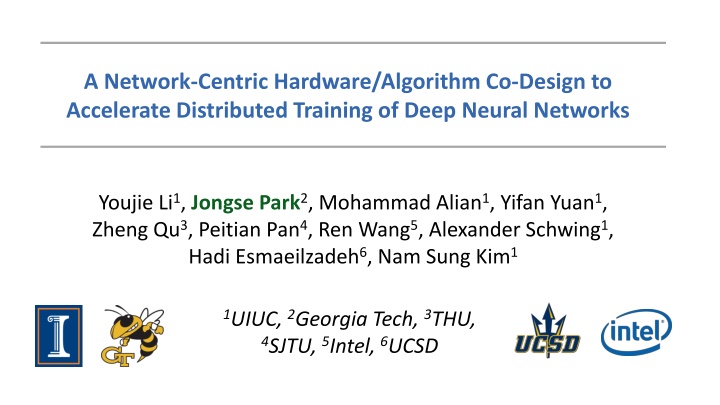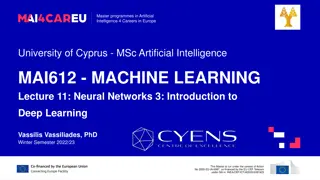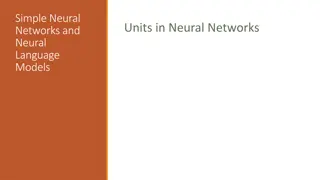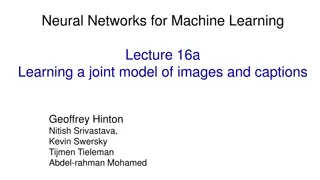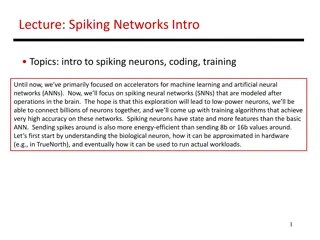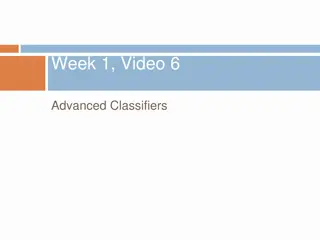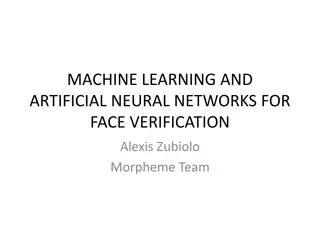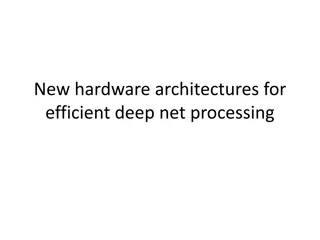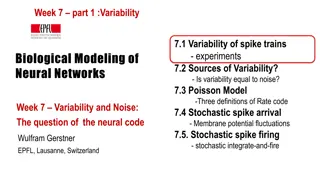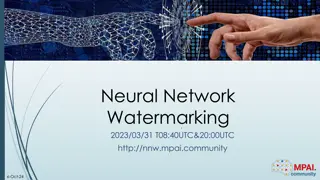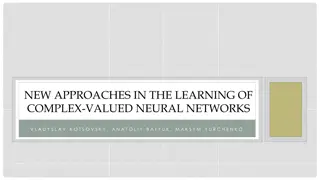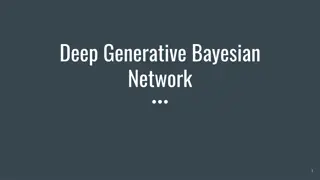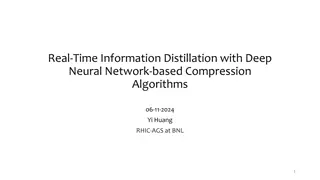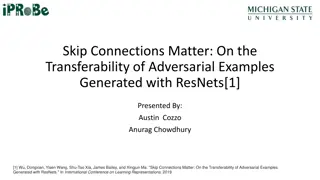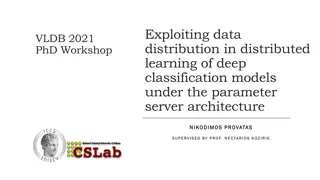Accelerate Distributed Training of Deep Neural Networks
Deep learning is advancing rapidly, requiring efficient distributed training methods to handle vast amounts of data and model complexity. This co-design approach focuses on reducing communication overhead and improving compression techniques for enhanced performance in neural network training across multiple nodes.
Download Presentation

Please find below an Image/Link to download the presentation.
The content on the website is provided AS IS for your information and personal use only. It may not be sold, licensed, or shared on other websites without obtaining consent from the author.If you encounter any issues during the download, it is possible that the publisher has removed the file from their server.
You are allowed to download the files provided on this website for personal or commercial use, subject to the condition that they are used lawfully. All files are the property of their respective owners.
The content on the website is provided AS IS for your information and personal use only. It may not be sold, licensed, or shared on other websites without obtaining consent from the author.
E N D
Presentation Transcript
A Network-Centric Hardware/Algorithm Co-Design to Accelerate Distributed Training of Deep Neural Networks Youjie Li1, Jongse Park2, Mohammad Alian1, Yifan Yuan1, Zheng Qu3, Peitian Pan4, Ren Wang5, Alexander Schwing1, Hadi Esmaeilzadeh6, Nam Sung Kim1 1UIUC, 2Georgia Tech, 3THU, 4SJTU, 5Intel, 6UCSD
Deep learning is growing exponentially! Training time (weeks or months) Training data size (hundreds of TB) DNN model complexity (hundreds of MB)
Distributed learning is essential! Parallelizing the learning task over multiple nodes. Aggregator DNN Model Replica Data Partition Worker Worker Worker Worker 3
Significant communication overhead in distributed learning! INCEPTIONN framework Synchronous training equivalent to TensorFlow Five Nodes 10 Gb Ethernet OpenMPI 2.0 Titan Xp GPUs CUDA 8.0
How to reduce communication? Straightforward Solution: Compression
Challenges for compression Challenge #1: Expensive compression overhead Original communication time in AlexNet Communication Compression Communication with 16-bit FP truncation 0 0.2 0.4 0.6 0.8 1 1.2 Challenge #2: Limited compressibility of weights Train AlexNet with 16-bit FP truncation Accuracy Baseline without truncation 80.2 % Weight truncation Only 00.9% Gradient truncation Only 79.7%
INCEPTIONN A hardware/algorithm co-design to accelerate distributed training Gradient-centric, decentralized training algorithm Hardware-friendly lossy gradient compression algorithm In-network accelerator for compression
In-network acceleration Pushing the compression to network Conventional practice: INCEPTIONN: Light overhead Network Interface Card FPGAs or ASICs General-purpose processors Heavy overhead
Hardware-friendly lossy gradient compression Requirements: High compression ratio Hardware-friendliness for acceleration Minimal loss in training accuracy Solution: Customized lossy compression algorithm for gradients
Why gradients? High error resilience Limited range and skewness to zero Early Middle Late AlexNet gradient distribution
Key ideas for lossy gradient compression algorithm Remove exponents in FP representation by setting it to a constant Remember the diff by shifting on mantissa with a concat ed 1 Compress more aggressively as values are close to zeros
Compression with worker-aggregator approach Aggregator Limitations 1. Less opportunities for compression 2. Performance bottleneck at aggregators Worker Worker Worker Worker
Gradient-centric decentralized training Approach 1. Communicate only gradients 2. Evenly distribute aggregation to the workers Worker Worker Advantages 1. Maximize opportunities for compression 2. Balanced load for compression/decompression Gradients Worker Worker
Evaluated DNN models and system specifications Name HDC AlexNet ResNet-50 VGG-16 Model size 5 MB 230 MB 100 MB 525 MB Dataset MNIST ImageNet Mini-batch size 25 64 32 64 Training data size 60,000 1,281,167 System specifications Number of nodes 4 System software C++, CUDA 8.0, Intel MKL 2018, and OpenMPI 2.0.2 CPU Intel Xeon CPU E5-2640 @2.6 GHz GPU NVIDIA Titan Xp FPGA Xilinx VC709 board Network 10 Gb Ethernet
Training runtime comparison WA: Worker-aggregator INC: INCEPTIONN WA+C: WA with compression INC+C: INC with compression INC+C offers 76% lower communication time compared to the WA baseline INC+C offers 2.2~3.1x system-level speedup over the WA baseline
Impact on final training accuracy Only 1 or 2 more epochs are required to match the same level of accuracy 17
Conclusion INCEPTIONN Hardware-algorithm co-designed in-network acceleration solution to reduce the communication overhead in distributed DNN training Gradient-centric, decentralized training algorithm Lossy gradient compression algorithm In-network acceleration for compression
